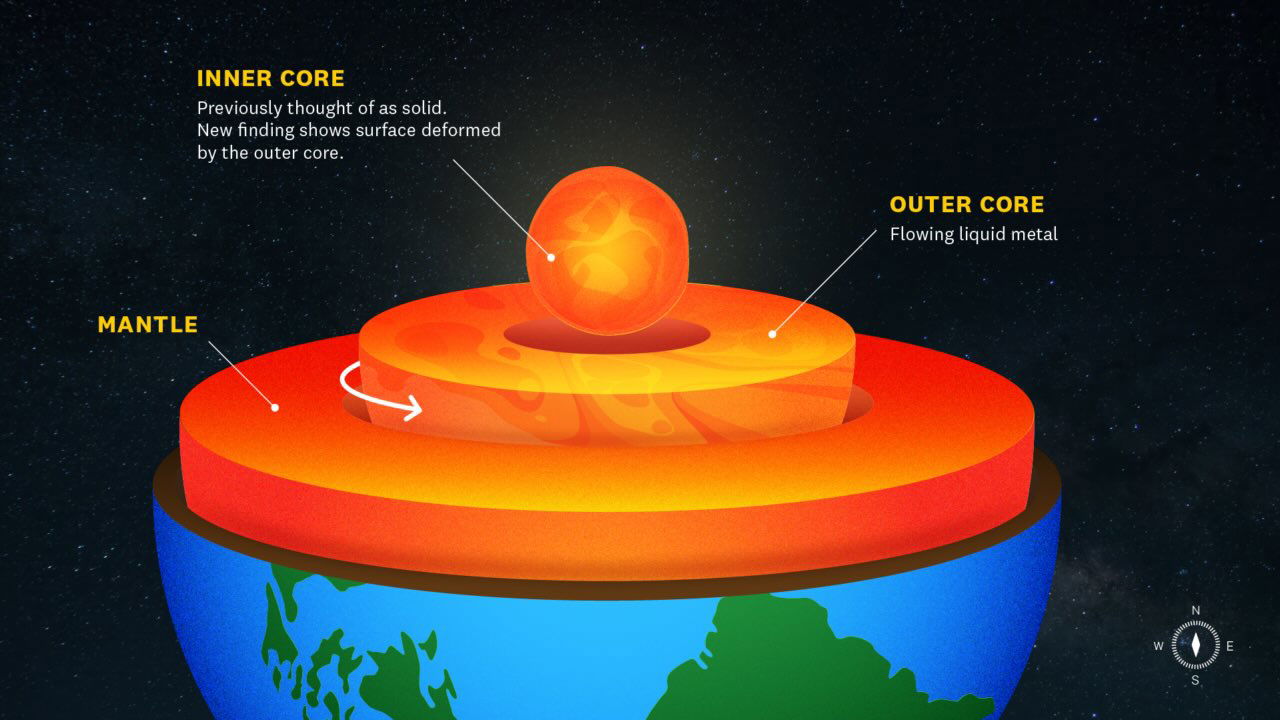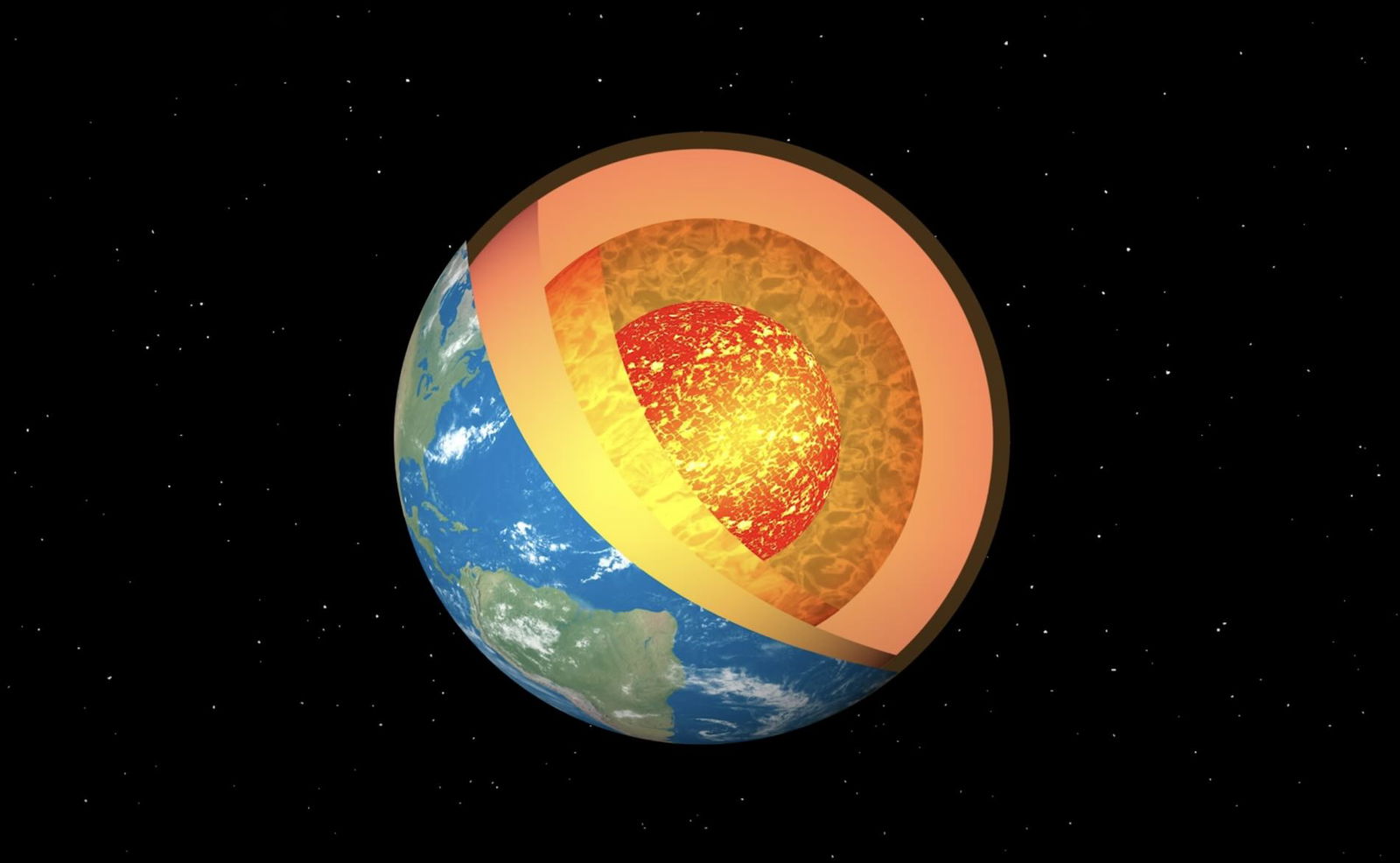Seismic waveform data has revealed unusual changes taking place near the Earth’s inner core, according to researchers who discovered evidence of previously unknown structural transformations occurring deep within the planet.
The discovery, made by a team of scientists at the University of Southern California (USC), lends new insights into deep-Earth phenomena that have long been debated by researchers.
In the past, most studies involving the Earth’s inner core have focused on its relationship to the planet’s rotation.
Unveiling new insights into the nature of the inner core of our planet had not been the focus of the USC team’s studies, although reviewing the available data revealed key insights into how topographical activity influences rotational phenomena within the Earth, as well as how they have gradually changed the average length of each day.
The changes the team observed may also be related to progressive slowing of the inner core.
Journey to the Center of the Earth
Our planet’s inner core is encased within a liquid outer core, where it remains gravitationally anchored close to 3,000 miles below the Earth’s surface.


Based on previous findings, it was believed the inner core was likely a solid, spherical formation. John Vidale, the principal investigator of the recent research, says that originally his team hoped to glean a better understanding of the core’s slowing over time.
That changed, however, as the team began analyzing seismograms spanning several decades, one set of which stood out among the others.
“Later on, I’d realize I was staring at evidence the inner core is not solid,” said Vidale, who currently holds the position of Dean’s Professor of Earth Sciences at the USC Dornsife College of Letters, Arts and Sciences.
The seismic waveform data the team relied on for the research revealed 121 repeating earthquakes, events which spanned more than 40 locations close to a chain of uninhabited volcanic islands in the South Atlantic Ocean known as the South Sandwich Islands.
Between 1991 and 2024, earthquakes occurring near these volcanically active Antarctic islands were monitored across great distances, which resulted in data collected at receiver-array stations near Fairbanks, Alaska, and Yellowknife, Canada.
Examining the data related to these events, Vidale and his team found a particular dataset of seismic waves collected at the Yellowknife station which featured unusual properties unlike anything he or the other researchers had previously seen.
Confounding Data Reveals Unusual Inner Core Activity
“At first the dataset confounded me,” Vidale admitted. However, once the resolution of the data was refined, it soon became evident that the seismic waveforms were conveying a sort of hidden message: that there was additional physical activity occurring near Earth’s inner core.
It wasn’t until his research team improved the resolution technique did it become clear the seismic waveforms represented additional physical activity of the inner core. Specifically, the team found what resembled ongoing changes in the inner core’s shape, where they believe a process called viscous deformation occurs along the inner core’s surface.
The resulting phenomena is that the Earth’s inner core periodically changes the shape of its relatively shallow boundary. As to what mechanism actually causes this, Vidale and the team believe that interactions between the inner and outer core are likely to be driving these newly observable structural changes.
“The molten outer core is widely known to be turbulent, but its turbulence had not been observed to disrupt its neighbor the inner core on a human timescale,” Vidale said in a statement.
“What we’re observing in this study for the first time is likely the outer core disturbing the inner core,” Vidale added.
Fundamentally, the team’s discovery challenges past thinking on the characteristics and behavior of the planet’s inner core, and potentially paves the way toward revealing new facts of the inner Earth’s dynamics, as well as how they may relate to the planet’s magnetic and thermal field.
Vidale and his team’s findings were detailed in a new study, “Annual-scale variability in both the rotation rate and near surface of Earth’s inner core,” published in Nature Geoscience on February 10, 2025.
Micah Hanks is the Editor-in-Chief and Co-Founder of The Debrief. He can be reached by email at micah@thedebrief.org. Follow his work at micahhanks.com and on X: @MicahHanks.

